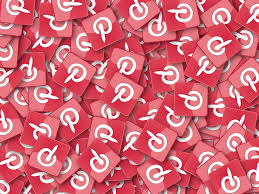Your cart is currently empty!

5 Tips for Pinterest for HBC Products
Pinterest, the ultimate visual search engine, is an obvious choice for health and beauty care products — HBC, in retail speak. Selling lipstick? Take a lot of great pictures, pin them, add compelling text including your main keywords, and link back to your best sales page, store finder, or e-commerce product page. Pinterest for HBC is that simple.
But not always. Here are 5 tips to keep in mind.
- Don’t look like an ad. We’re not all selling lipstick. Your headache remedy may not be as photogenic as you’d like. Plus, consumers tend to search by problem, and Pinterest searches for health and beauty problems tend to show a lot of fetching photos of home remedies. This collection of information and attractive images sets the bar. Your ad will not only be less appealing — it can actually irritate viewers. Instead, choose an informative infographic, attractive picture explaining a concept, or helpful how-to. Then link it to your highly relevant sales page.

- Tell a story. One of my favorite Pinterest campaigns is our Everything Bar board for Koru Naturals. The product — their Everything Bar — shows up along with great original adventure photos. We captioned them with little paragraphs including major keywords and the appeal of the Everything Bar lifestyle. Every product has a story to tell. Pinterest is a great place to do it.

- Don’t confuse Google and Pinterest. Pinterest is indeed a search engine. In fact, studies (yep, there are studies about Pinterest) have found that Pinterest is used more as a search engine than as a social platform. So SEO is important for your pins — you need to make sure that you have enough text to convey meaning and show up in the right searches. On the other hand, Pinterest is not that good at being a search engine. You can’t rely on Pinterest to understand your natural human language and show your pins to the right people. Study the pins and pinners in your space and use the terms that are already being used in your community. A university study found that “hair_beauty” is one of the top ten searches among women. You have some hair products? Make sure you use that keyword. In fact, make a board called “Hair Beauty.” Whatever your product, remember that Pinterest doesn’t give points for originality and its searches are mostly word+word+word, not the more sophisticated searches Google does.

- Crowdsource a bit. Make sure you have plenty of pin-worthy images at your website, and be sure to have a Pinterest button to encourage sharing. Then — and this is something many brands skip — look for the people who are pinning your content — or better yet, their own pictures of your products. Repin them, chat with the pinners, and watch for new-to-you influencers in your space.

- Be worth the click. Pinterest users often just search and repin, not bothering to click through the pins to the page. Encourage your Pinterest followers to click through by making sure there’s something worthwhile when they do. Provide good content, a landing page with a great offer, or more great photos. Tease readers with a phrase letting them know the additional value they’ll get by clicking through.
Use these tips and track how they work out for you. That way, you’ll know what to do more often at your company Pinterest page.
by
Tags:

Leave a Reply